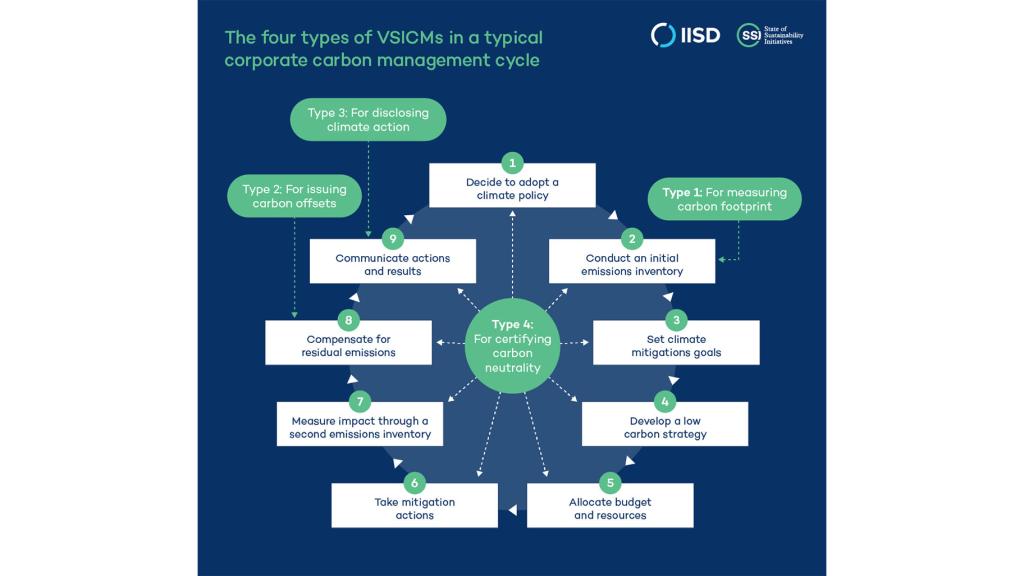
Voluntary Standards and Initiatives for Carbon Management
Navigating the landscape
These two reports unpack the complex landscape of voluntary standards and initiatives for carbon management to help private sector actors reach net-zero emissions.
As people worldwide grapple with the effects of rising temperatures, companies are under increasing legal, financial, and societal pressure to cut their emissions. Voluntary standards and initiatives for carbon management (VSICMs) are voluntary measures that organizations can use to develop, report, register, or certify certain activities or processes related to climate action.
VSICMs have emerged and developed rapidly in the past 30 years in response to the escalating climate emergency. They offer companies step-by-step methods and guidance to help them initiate or increase the ambition of their climate change mitigation strategies.
Non-governmental organizations, international organizations, and private sector actors have established VSICMs at a faster rate and with more flexibility than legally binding initiatives. This has led to the co-existence of—and competition among—multiple standards and initiatives. They often have overlapping and complementary goals but different scopes and functions, creating a complex landscape.
Voluntary Standards and Initiatives for Carbon Management: Navigating the Landscape helps private sector actors understand the different types of VSICMs and how they can help them to advance their carbon management practices.

The report also outlines various challenges that have arisen due to the organic evolution of VSICMs and highlights the need for a clear governance framework to promote coordination and alignment across initiatives and enhance the credibility of voluntary efforts.
The accompanying report, State of Sustainability Initiatives Review: Standards and Carbon Neutrality, and appendix delve further into carbon neutrality standards. They compare nine standards of this type using the State of Sustainability Initiatives’ CARE methodology, which uses a comprehensive list of indicators to benchmark standards according to their coverage, assurance, responsiveness, and engagement.
You might also be interested in
Voluntary initiatives can lead the way to net-zero but must coordinate standards and get more businesses on board
Voluntary standards and initiatives for carbon management can fill a legal void in climate regulations but limited alignment and a lack of uptake from companies are hindering their impact.
Global Market Report: Soybean prices and sustainability
Less than 3% of soybeans are produced in compliance with sustainability standards. This report unpacks what needs to change to make soybeans a food that protects rather than harms the natural environment.
Measures to Enhance Forest Conservation and Reduce Deforestation
This report outlines and compares various policy measures that Costa Rica, Gabon, Indonesia, Peru, and Rwanda have put in place to address deforestation.
Countries Seeking to Protect Forests Should Take Lead From Five Developing Countries
As governments face increasing pressure to protect their forests, new research highlights the importance of sharing the wins and setbacks of tried and tested action in the Global South.